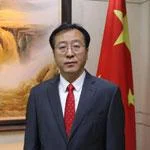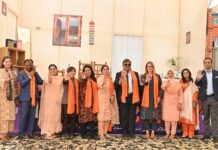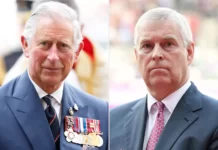In the realm of international relations, power is often associated with military might, economic prowess, or political influence, that is, hard power. However, there is a more subtle and persuasive form of power that is equally, if not more effective in shaping global perceptions and relations; soft power. Soft power relies mostly on attraction and perception building rather than coercion. Cultural diplomacy is one of the branches of soft power along with political institutions and foreign policy.
The term “soft power” was first introduced by Joseph Nye in the late 1980s. He defined soft power as the ability to ge “others to want the outcome that you want” more precisely, “the ability to achieve goals through attraction rather than coercion”. Whilst, comparing soft power with hard power, Nye stated that soft power is “free” as it requires fewer resources and has limited consequences in case of failure. As a consequence, soft power is a matter of changing behaviour, and thought process through persuasion.
Cultural diplomacy is a key element of soft power. It is an alternate route for states instead of coercion to increase their global influence and standing. It is defined as, “a course of actions, which are based on and utilize the exchange of ideas, values, traditions and other aspects of culture or identity, whether to strengthen relationships, enhance socio-cultural cooperation, promote national interests and beyond.” Cultural diplomacy, when learned and applied appropriately, holds the power to influence global public opinion. However, a state can alter the global public opinion when sources of soft power outflow organically. Some countries like Russia have heavily invested in their cultural soft power with little positive consequence.
Cultural diplomacy is a two-way street that accepts other countries’ cultures while promoting one’s own. For this purpose, many countries carry out cultural exchange programmes to show that they are not just promoting their culture but are also interested in learning and understanding the culture of other states. This also leads to increased tourism, trade and cooperation among states and positive growth of socio-cultural relations.
A few case studies to better understand the concept cultural diplomacy as a tool of soft power are;
South Korean Culture: In recent years, Korean culture has gained quite a popularity among people around the world. The global fanbase of Korean culture is known as “Hallyu” in Korean, meaning “Korean Wave”. The Korean government has utilized this golden opportunity for strengthening its socio-economic conditions by further advertising K-POP, K-Dramas, language and cuisines. This popularity of Korean Culture among people, and their liking for it, has also increased the tourism influx in the country. The Koreans have also started scholarship programmes and fellowships to invite people to their country. And these programs are not just for educational purposes but also a way of promoting Korean culture.
Japanese Culture: The Japanese have also been working on enhancing their socio-culture and economic conditions by marketing their culture, language and cuisine to their full potential. The Japanese culture and lifestyle have been gaining quite a popularity among the so-called “Internet Generation”. This popularity is not limited to the East Asian Region but also other regions such as the Middle East and South Asia. Apart from this, Japan’s government has also initiated dialogues, cultural exchange and educational programmes. The Japanese anime and manga are also quite popular among the young generation.
Soft power and cultural diplomacy are invaluable tools in the complex landscape of international relations. It allows states to build connections, promote a positive image of their country, and foster mutual understanding without resorting to coercion. In this way the world becomes more interconnected. All the above-mentioned states have utilized the soft power for the projection of a positive image internationally through the promotion of their culture.
The USA: Ever since the 9/11 attack the USA has used soft power to increase their influence in the world. They carry out cultural exchange programmes in which they take in students from all across the world to promote their culture and heritage. They also provide scholarships and fellowships under such programmes as Fulbright and USAID. Apart from this, the USA also sends its musicians and singers to different parts of the world so that people can develop a taste for their music. Another instrument which the USA uses to show off its culture is Hollywood. There are many movies and teledramas in which they have shown how active the US agency has been in the world helping and aiding other states. In short, they are not just promoting their culture via movies and seasons but also, constantly reminding the world that they are the only states on which other states rely on or can in the future.
Chinese cultural diplomacy: Under the guidance of President Xi Jinping, China’s cultural diplomacy has been in full swing. They have been promoting their tourism, art literature, dramas and music through various online platforms. Similarly, their state governed media “Xinhua News Agency” has also been playing a great role in elevating the country’s image globally. Apart from this, the Chinese Confucius Institutes have played a great role in global transmission of Chinese language and culture.
Moreover, pre-covid-19, China in collaboration with Pakistan, its all-season friend and strategic partner, held a cultural heritage exhibition themed, “Chinese Culture and Traditional Craftsmanship” in Lahore. In this exhibition all types of Chinese cultural heritage and handicraft were showcased. Another exhibition that also took place at China Cultural Centre, Pakistan was themed “Chinese Intangible Cultural Heritage”. So, all in all China has been very keen and passionate about promoting its cultural diplomacy.
Turkish cultural diplomacy: Turks have left no stone unturned in projecting a positive image of their country using soft power. They have promoted a positive aspect of their countries via social media, the drama industry and diplomats. The sudden craze of Turkish language, cuisine, dramas, dressing among people shows that Turks have been successful in projecting a positive image of their country in the world. This has also resulted in boosting the tourism industry and economy of the country. They also carry out scholarship programmes inviting students from all over the world to come and study in some of their best universities. Apart from this, Turks have also promoted a positive aspect of their history via dramas such as Ertugrul and Kurlus Osman.
In the above-mentioned cases lies the lessons for Pakistan that may help to boost the projection of culture on a global level. Pakistan’s cultural power includes Sufi music, musical instruments like the rubab and the tabla, folk dances like the Khattak dance, Sindhi and Pashto songs also that have the tendency to reach millions across the globe. While talking about the folklore and Sufism in Pakistan, one cannot ignore Southern Punjab. South Punjab is the region rich in culture, heritage, literature, traditional dances, and devotional music. This region is also home town to some of the most influential sufi saints. The places such as Hakra-Indus Civilizations, the Harappan site mound, medieval forts, palaces and walled towns are what enhance the beauty of this region. Some of the famous cities in this region include;
Multan: There are various old forts and tombs and an institute of blue pottery and other traditional handicrafts in Multan. It has six Historic gates; Pak Gate, Haram Gate, Delhi Gate, Daulat Gate, Bohar Gate, Lahori Gate. in the middle of the city Multan Fort is present.
Bahawalpur: It is also known as “the city of palaces” situated in the south of Sutlej River. The famous sites here are; Holy city of Uch Sharif, Nur Mahal, Sadiq Garh Palace, Bahawalgar Palace Complex and Dewar fort.
Evidently, a Pakistani song ‘Pasoori’ from the platform of Coke Studio garnered international praise. The Baloch singers and musicians Kaifi Khalil and Eva B also became music sensations worldwide, with Eva B getting featured on Times Square in New York. The music and drama industry of Pakistan has the power to grasp the attention of the international masses. The media continuously project negative stories which give a bad impression of the country. The culture of Pakistan is very rich but its projection to the world is very weak. The international community must be made aware of the diverse Pakistani culture. In the age of digitization, social media has been criminally neglected for the soft image projection by Pakistan. It must be made use of for effective and efficient projection of Pakistani culture.
Soft power and cultural diplomacy are invaluable tools in the complex landscape of international relations. It allows states to build connections, promote a positive image of their country, and foster mutual understanding without resorting to coercion. In this way the world becomes more interconnected. All the above-mentioned states have utilized the soft power for the projection of a positive image internationally through the promotion of their culture. Pakistan needs to learn that in the era of globalization it is important to maintain and promote a soft image.























